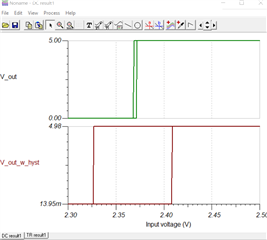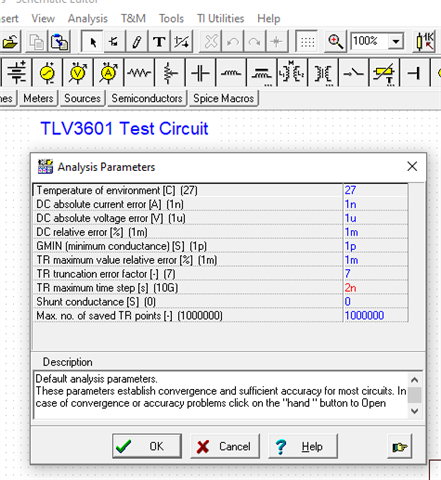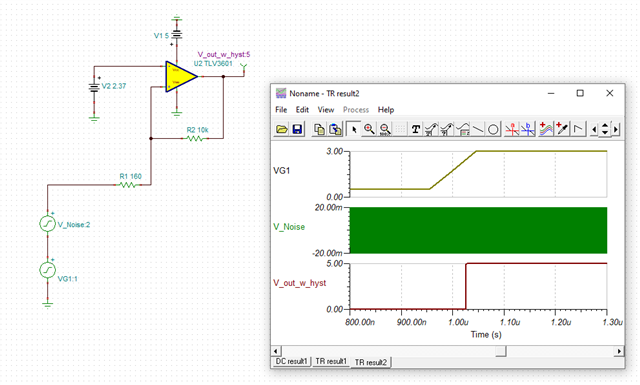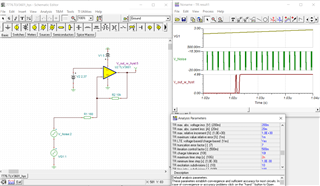Other Parts Discussed in Thread: TLV3602, TINA-TI
Hello,
I want to use an external hysteresis for the noninverting configuration of TLV3601 or TLV3602. My hysteresis voltage (V_hys) is 80mV. The hysteresis resistances are calculated based on equation (3) of the TLV3601 datasheet.
![]()
Below you can find the Tina-Ti file of my simulation circuit. Although the DC transfer characteristic in Tina-Ti shows that V_hys=80mV, the hysteresis circuit does not work in the transient analysis where the peak-to-peak noise voltage is 40mV.


What could be the reason for this?
Best regards,
Kara






